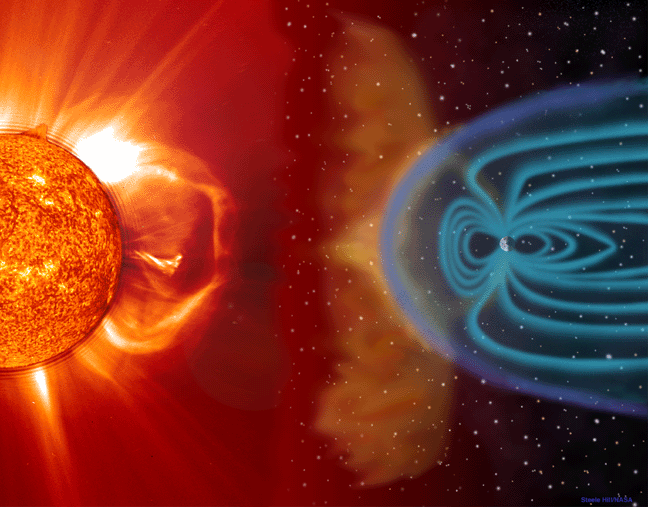
NASA is using multiple satellites and sensors to monitor the aftermath of the devastating earthquake and tsunami that rattled Japan on March 11.
However, NASA’s Earth-observing satellites are unable to directly measure radiation-containing plumes, such as those experts fear may have wafted from a damaged Japanese nuclear plant in Fukushima prefecture.
We checked in with Robert Cahalan, the head of Goddard Space Flight Center’s Climate and Radiation Branch and the project scientist for the SORCE satellite, to find out why. Here’s how Cahalan explained it:
“NASA could fly a drone directly into a cloud to detect radioactivity, but it’s not easy to measure the damaging radiation from the Fukushima plant with a satellite.
The radiation consists mostly of negatively charged electrons from so-called “beta decay” of radioactive products of the nuclear fission reactions, as well as positively charged alpha particles, which are identical to a helium nucleus (for example, two protons and two neutrons all bound together into a single particle).
NASA does have detectors in space that measure such charged particles, but the great majority of these particles don’t come from Earth. Rather, they come from the sun, which emits a very large number of charged particles in what is called the “solar wind” — which is especially intense when the sun is active. The particles can also come from sources outside our solar system, so-called galactic cosmic rays, or GCRs, that become more detectable when the sun is less active.
Fortunately, we humans down on Earth are protected from a lot of this particle radiation by Earth’s magnetic field, which steers charged particles along the field lines toward Earth’s magnetic poles, and thus acts as a shield for the human population. Trying to pick out the Fukushima radioactivity from the huge number of charged particles in outer space would be like finding the proverbial “needle in the haystack.” So, unfortunately, we have to rely on ground-based particle detectors, like the common Geiger counters that have been shown in use by the workers in their white hazmat suits in the tragic scenes in Japan.
There is also high-energy gamma radiation, which is electromagnetic radiation. Again, NASA has had the Compton Gamma Ray Observatory (GRO) in space, and now has FERMI. But these look for extremely intense bursts of gamma radiation that come from colliding galaxies, quasars, and other extreme events in the universe. The low flux of gamma radiation from the nuclear power plant is all absorbed in the Earth’s atmosphere, and never makes it into space. The only way we might detect some gamma radiation from Earth’s surface would be if we created a gamma ray burst by detonating a large nuclear bomb. That kind of event cannot happen in a nuclear reactor, even in the worst case of a core meltdown.
NASA’s Earth-observing satellites monitor many health related quantities including aerosols and ozone, nitrous oxides, and other constituents in the air we breathe, as well as fires, floods, and other events that impact life on Earth; however, near-Earth radioactivity can only be detected near the radioactive source, not by satellites.”
Visualization of solar wind and Earth’s magnetosphere courtesy of Steele Hill and NASA’s SOHO team. Visit this page for more information.
–Adam Voiland, NASA’s Earth Science News Team

